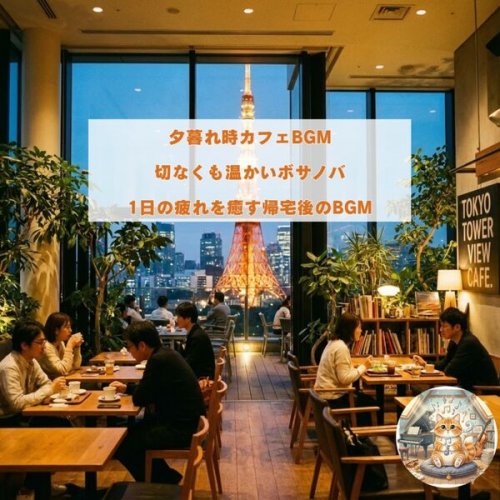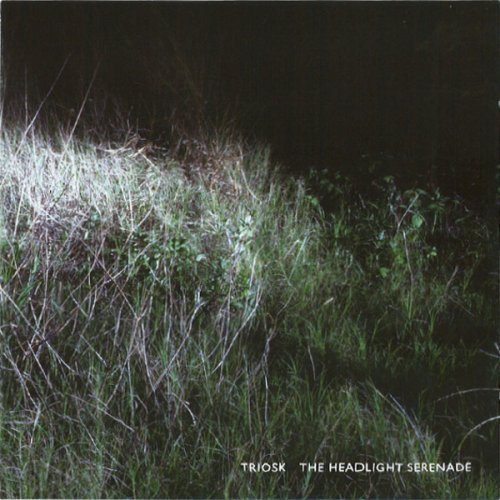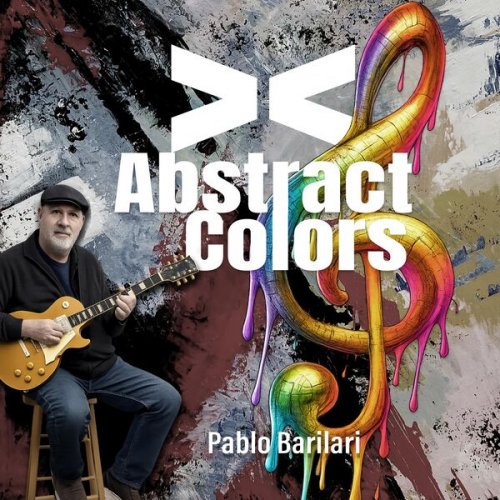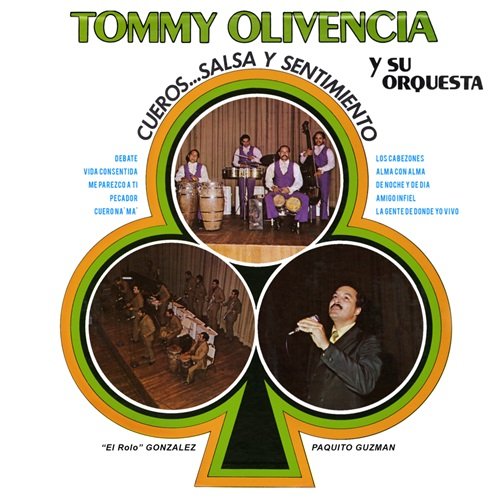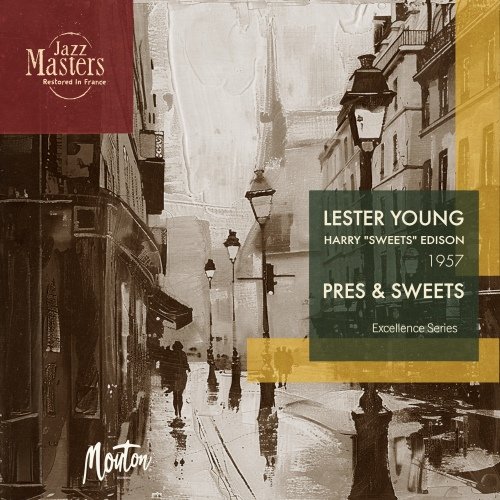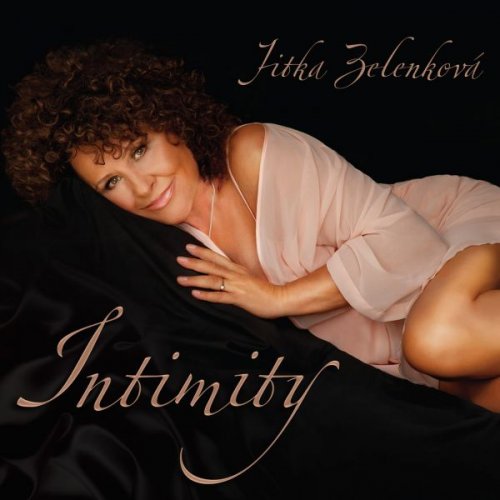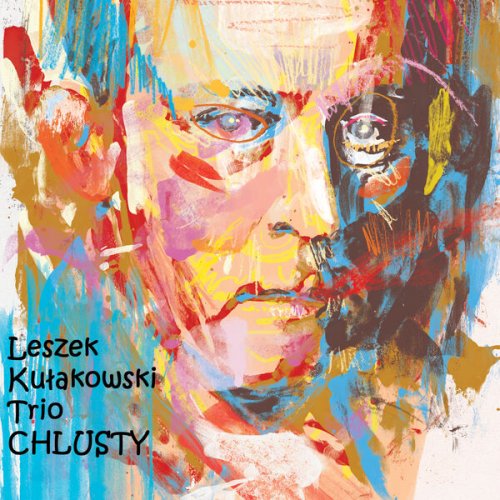Gaston Joya - Fusión de almas (2021)
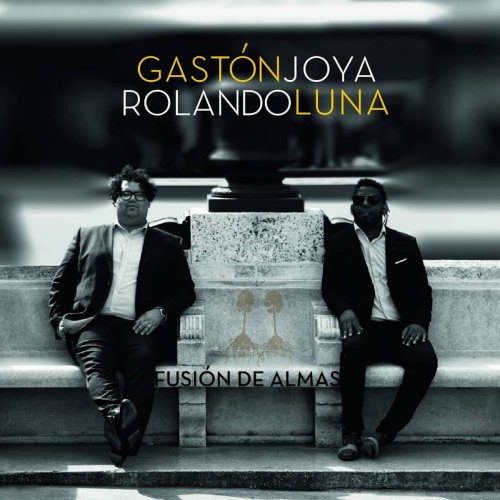
Artist: Gaston Joya, Rolando Luna
Title: Fusión de almas
Year Of Release: 2021
Label: Cinquillo
Genre: Jazz
Quality: FLAC (tracks)
Total Time: 40:05 min
Total Size: 159 MB
WebSite: Album Preview
Tracklist:Title: Fusión de almas
Year Of Release: 2021
Label: Cinquillo
Genre: Jazz
Quality: FLAC (tracks)
Total Time: 40:05 min
Total Size: 159 MB
WebSite: Album Preview
01. Fusión de almas
02. Danza de la moza
03. Cuentos a Ninón
04. Polka Cabakiño
05. Vals
06. Odeón
07. Invitación
08. Los ojos de Pepa-El pañuelo de pepa
09. Aires nacionales argentinos
10. Danza del tambor
Fusión de Almas (Producciones Colibrí, 2019) starts from a simple premise: to get closer to the musical legacy of the American continent, based on the arrangement of romantic-style nationalist works. The result far exceeds all expectations, which says a lot, being a phonogram starring two of the most recognized musicians on the national jazz scene: Rolando Luna (piano) and Gastón Joya (bass). They propose the rediscovery of a heritage that they defend as their own and, for this, they make use of the wide creative arsenal built throughout their careers on Cuban and international stages.
We are facing an album that seduces from the first note. The listener, hypnotized by its minimalism and evocative poetics, quickly becomes an accomplice in an intimate and emotional journey through the soundscapes of Latin American musical nationalism. This interplay between present and past uses jazz to show the multiple cultural connections between the countries that make up our America. For this, Rolando Luna and Gastón Joya selected several classical composers who reflected in their work the sounds of popular or traditional music: Ernesto Nazareth from Brazil, Julián Aguirre and Alberto Ginastera from Argentina and Manuel Saumell, Ignacio Cervantes and Amadeo Roldán, representing from Cuba.
These authors, who lived through the passage from the 19th to the 20th century - struggling between the late romanticism and the advent of the musical avant-gardes - found in the language of the piano microform the ideal vehicle to channel their nationalist concerns. For them, nineteenth-century romanticism served as common ground in the development of stylized expressions of national music, which later marked the collective imagination of the continent. Roldán and Ginastera belong to a slightly later generation, but also marked by folkloric concerns. And the inclusion of Roldán's “Danza del tambor” as the closing of the album Fusión de almas exemplifies the evolution of the compositional language of Latin American creators, in their search to reflect in a more genuine way the sounds of popular or folk music.
The six mentioned composers became, by chance, the object of the new album by Rolando Luna and Gastón Joya; The selection was the result of an exercise well known to the practicing performer: the shared listening of a music folder provided by a colleague or friend. Jazz players discovered the music of Nazareth and Aguirre while on tour. From the approach to these works of incredible richness, which also revealed points in common with the national dance repertoire (of which Saumell and Cervantes are the great paradigms), the idea arises of versioning, together, some of the pieces for the format of piano and double bass. Thus began to weave a cultural dialogue that proposes multiple “fusions”: the union of two musicians and friends who know each other deeply after playing together for years; the interconnection of two epochs - the past that inspires and the present that is renewed; and, finally, the communion of two universes that are usually presented as antagonistic: concert or academic music and popular music.
Luna and Joya did not set out on a conventional jazz album. His intention was to recreate the spirit and style of each work without altering its identity, and yes, using the creative and interpretive resources at hand. Each improvisation organically links with the original material of the piece, taking advantage of original intonations and rhythmic patterns. The creativity and scope of the proposal make possible a highly emotional listening, which offers multiple levels of interpretation. The prior knowledge of the covered repertoires allows establishing an immediate affective connection, based on significant associations with these sound references, although it is not an essential requirement to enjoy the phonogram.
The journey begins with the dance of Cervantes that gives the album its title: “Fusion of souls”. Piano and double bass come together in a subtle dialogue, which knows how to exploit the lyricism of the melody and the ups and downs of the bass of the original piece. Harmony is enriched by wise digressions that place us in the jazz universe, without straying too far from the progressions of nineteenth-century dance. It is followed by “Danza de la moza” by Ginastera, which intelligently exploits the rhythmic counterpoint of Argentine folklore, presented with taste and mischief.
Julián Aguirre's “Cuentos a Ninión” appears as the third track on the phonogram, a nostalgic song that incorporates the use of the bow to warm the melody developed by the bass.
At the center of the album are three pieces by Ernesto Nazareth, this Brazilian pianist who knew how to combine Chopin with the music of the Brazilian choro: “Polka Cavaquinho”, “Vals” and “Odeón”. Cervantes returns with "Invitation", connecting the Cuban listener with a repertoire that is familiar to him; perhaps, for this reason, the musicians decided to keep a version as less remote as possible from the original, without incorporating improvisations. Saumell is featured in the next track from the contrast of two of his contradanzas: “Los ojos de Pepa” and “Pañuelo de Pepa”; for the occasion they combine the themes and sections of both pieces.
The topic of the Argentine gaucho's lament appears with “Aires argentinos”, the most nostalgic and reflective arrangement of the album, where sound environments are recreated that indicate a last rest before the eminent closing. The famous "Drum Dance" concludes this musical journey in an energetic and emphatic way.
The curation of the album is one of its main attractions. The versions were placed to compensate for listening, alternating characters and tempos, to the point of converting the integral hearing of it into a pleasant and emotional experience. Nothing saturates, there are no fancies or excesses. It is about the intimate relationship between two instruments that exploit their timbral potential without the need for bragging: the piano, with a crisp, pearly touch that reminds us of the tradition of Chopin heritage; the bass, from the warmth of its sound, which explodes in moments of lyricism. The masterful sound work, by Orestes Águila, highlights the cameral relationship between the instruments, with a mixing work that allows us to appreciate the details of the continuous play between bass and piano.
Fusion of souls is one of those proposals called to endure. It has come to be registered in the Cuban discography as a result of an interpretive camaraderie, manifested in each of its exquisite musical arrangements. Rolando Luna and Gastón Joya are committed to claiming a repertoire of continental transcendence based on aesthetic and spiritual interconnections, returning us with each dance, contradanza and tango to the roots of our shared identity.
We are facing an album that seduces from the first note. The listener, hypnotized by its minimalism and evocative poetics, quickly becomes an accomplice in an intimate and emotional journey through the soundscapes of Latin American musical nationalism. This interplay between present and past uses jazz to show the multiple cultural connections between the countries that make up our America. For this, Rolando Luna and Gastón Joya selected several classical composers who reflected in their work the sounds of popular or traditional music: Ernesto Nazareth from Brazil, Julián Aguirre and Alberto Ginastera from Argentina and Manuel Saumell, Ignacio Cervantes and Amadeo Roldán, representing from Cuba.
These authors, who lived through the passage from the 19th to the 20th century - struggling between the late romanticism and the advent of the musical avant-gardes - found in the language of the piano microform the ideal vehicle to channel their nationalist concerns. For them, nineteenth-century romanticism served as common ground in the development of stylized expressions of national music, which later marked the collective imagination of the continent. Roldán and Ginastera belong to a slightly later generation, but also marked by folkloric concerns. And the inclusion of Roldán's “Danza del tambor” as the closing of the album Fusión de almas exemplifies the evolution of the compositional language of Latin American creators, in their search to reflect in a more genuine way the sounds of popular or folk music.
The six mentioned composers became, by chance, the object of the new album by Rolando Luna and Gastón Joya; The selection was the result of an exercise well known to the practicing performer: the shared listening of a music folder provided by a colleague or friend. Jazz players discovered the music of Nazareth and Aguirre while on tour. From the approach to these works of incredible richness, which also revealed points in common with the national dance repertoire (of which Saumell and Cervantes are the great paradigms), the idea arises of versioning, together, some of the pieces for the format of piano and double bass. Thus began to weave a cultural dialogue that proposes multiple “fusions”: the union of two musicians and friends who know each other deeply after playing together for years; the interconnection of two epochs - the past that inspires and the present that is renewed; and, finally, the communion of two universes that are usually presented as antagonistic: concert or academic music and popular music.
Luna and Joya did not set out on a conventional jazz album. His intention was to recreate the spirit and style of each work without altering its identity, and yes, using the creative and interpretive resources at hand. Each improvisation organically links with the original material of the piece, taking advantage of original intonations and rhythmic patterns. The creativity and scope of the proposal make possible a highly emotional listening, which offers multiple levels of interpretation. The prior knowledge of the covered repertoires allows establishing an immediate affective connection, based on significant associations with these sound references, although it is not an essential requirement to enjoy the phonogram.
The journey begins with the dance of Cervantes that gives the album its title: “Fusion of souls”. Piano and double bass come together in a subtle dialogue, which knows how to exploit the lyricism of the melody and the ups and downs of the bass of the original piece. Harmony is enriched by wise digressions that place us in the jazz universe, without straying too far from the progressions of nineteenth-century dance. It is followed by “Danza de la moza” by Ginastera, which intelligently exploits the rhythmic counterpoint of Argentine folklore, presented with taste and mischief.
Julián Aguirre's “Cuentos a Ninión” appears as the third track on the phonogram, a nostalgic song that incorporates the use of the bow to warm the melody developed by the bass.
At the center of the album are three pieces by Ernesto Nazareth, this Brazilian pianist who knew how to combine Chopin with the music of the Brazilian choro: “Polka Cavaquinho”, “Vals” and “Odeón”. Cervantes returns with "Invitation", connecting the Cuban listener with a repertoire that is familiar to him; perhaps, for this reason, the musicians decided to keep a version as less remote as possible from the original, without incorporating improvisations. Saumell is featured in the next track from the contrast of two of his contradanzas: “Los ojos de Pepa” and “Pañuelo de Pepa”; for the occasion they combine the themes and sections of both pieces.
The topic of the Argentine gaucho's lament appears with “Aires argentinos”, the most nostalgic and reflective arrangement of the album, where sound environments are recreated that indicate a last rest before the eminent closing. The famous "Drum Dance" concludes this musical journey in an energetic and emphatic way.
The curation of the album is one of its main attractions. The versions were placed to compensate for listening, alternating characters and tempos, to the point of converting the integral hearing of it into a pleasant and emotional experience. Nothing saturates, there are no fancies or excesses. It is about the intimate relationship between two instruments that exploit their timbral potential without the need for bragging: the piano, with a crisp, pearly touch that reminds us of the tradition of Chopin heritage; the bass, from the warmth of its sound, which explodes in moments of lyricism. The masterful sound work, by Orestes Águila, highlights the cameral relationship between the instruments, with a mixing work that allows us to appreciate the details of the continuous play between bass and piano.
Fusion of souls is one of those proposals called to endure. It has come to be registered in the Cuban discography as a result of an interpretive camaraderie, manifested in each of its exquisite musical arrangements. Rolando Luna and Gastón Joya are committed to claiming a repertoire of continental transcendence based on aesthetic and spiritual interconnections, returning us with each dance, contradanza and tango to the roots of our shared identity.

![Grund zur Annahme - Grund Zur Annahme III (2026) [Hi-Res] Grund zur Annahme - Grund Zur Annahme III (2026) [Hi-Res]](https://www.dibpic.com/uploads/posts/2026-01/1767513979_cover.jpg)
